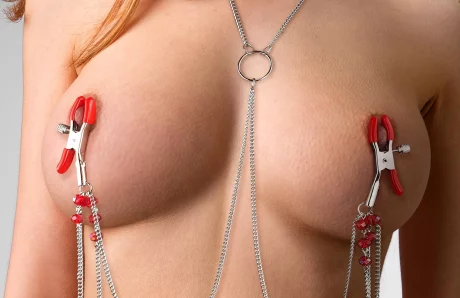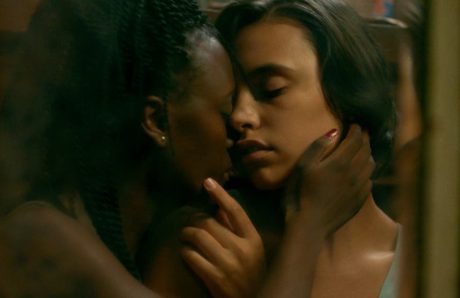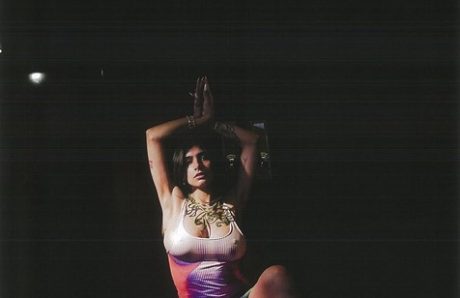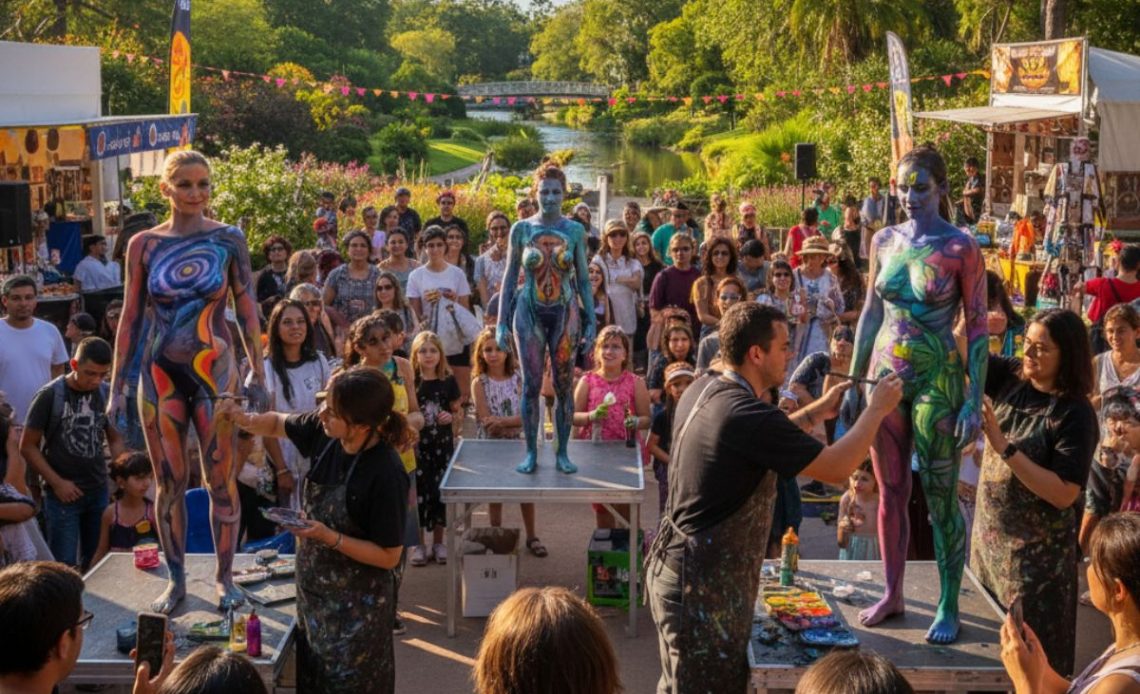
For millennia, the breast has been celebrated and represented in art and culture as a powerful symbol. Yet beyond these traditional representations, a more modern and often overlooked phenomenon is emerging. One in which the bust becomes not just a subject, but a canvas or performance art in its own right.
This article takes an in-depth look at these events, where the bust is literally transformed into a work of art. We examine dedicated festivities, from body painting festivals to more singular competitions, to understand their cultural and sociological motivations.
The body as canvas: the bust in the arts
The mission of art has always been to capture beauty and provoke reflection. In body painting, the bust, with its curves and surface, becomes a unique and ephemeral medium. It’s a space where creativity expresses itself without limits, celebrating the human body in its purest, rawest form.
Body Painting: a festival of creativity
Body painting is an age-old practice that has undergone a spectacular revival in recent decades. Far from simplistic eroticism, it’s a genuine artistic discipline. Major events, such as the World Bodypainting Festival in Austria, attract artists and models from all over the world.
The torso, and more broadly the chest, is a favorite area. Its natural contours, curves and relief offer a fascinating playground for the most sophisticated creations. The models are not mere “portmanteaus”, but collaborators who bring the work to life through their movements, poses and expressions.
The motifs and themes are infinitely varied. There are creations that imitate landscapes, with nipples becoming mountain peaks or setting suns. Other works transform the skin into a lush floral canvas, with petals and leaves seemingly emerging from the curves of the body.
Themes can also be fantastical, metamorphosing women into mythological creatures, divinities or fairytale characters. These creations are not aimed at voyeurism, but at an immersive experience, where the viewer is invited to appreciate the beauty of the human body in its totality, without focusing on a single part.
The audience at these festivals is often a mix of artists, enthusiasts and the curious. The atmosphere is that of an open-air art gallery, far from a vulgar spectacle. The diversity of bodies, sizes and shapes is celebrated.
The artist works with light and shadow to highlight natural curves, paying homage to the morphology of each model. The gaze is shifted from the sexual object to the aesthetic object, a body that becomes a tableau vivant, a celebration of human creativity.
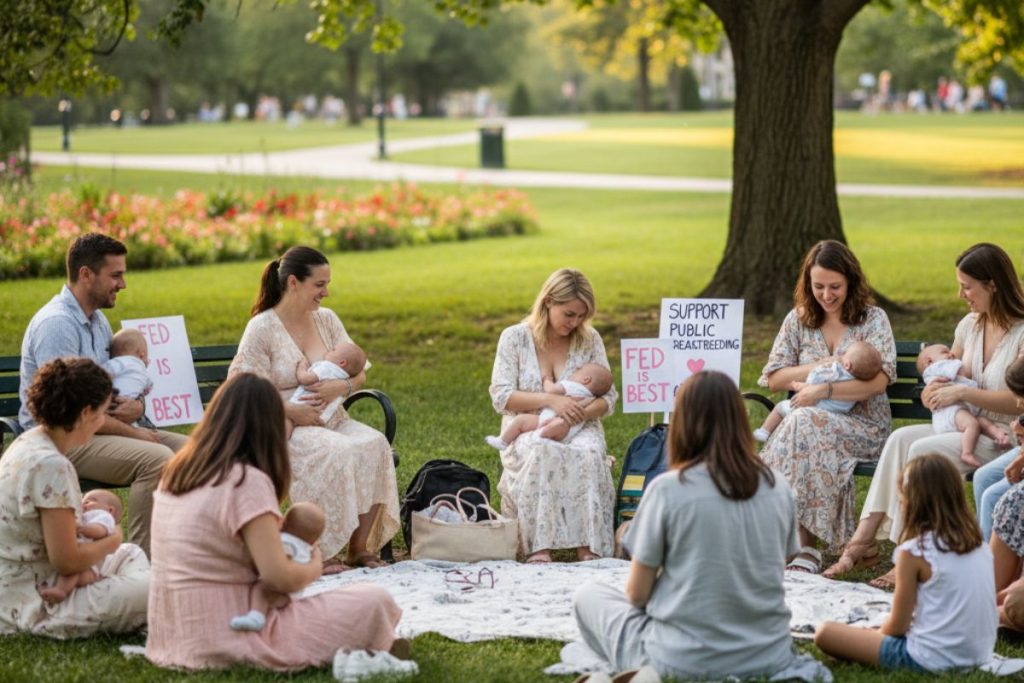
Collective celebration: modern festivals and rituals
Beyond the ephemeral art of painting, the breast is at the center of festivals that reinvent its cultural significance. These events, often ignored by the mainstream media, offer an alternative vision, more focused on functionality, reappropriation and the power of humor.
The breastfeeding festival: motherhood’s work of art
If breasts are historically linked to motherhood, modern festivals celebrate them in an explicit and militant way. Some international events, such as World Breastfeeding Week, are accompanied by festivities and gatherings where mothers come together for public breastfeeding sessions.
Far from being a spectacle, it’s an affirmation of the natural beauty and power of life. Poetry, singing and storytelling competitions celebrate the unique bond between mother and child, placing the breast at the center of this narrative. These events reappropriate the biological function of this organ, highlighting it as a symbol of life and connection.
By gathering together and breastfeeding in public, these women defy the social taboo that often surrounds breastfeeding outside the private sphere. They transform an act considered embarrassing by some into an act of pride and solidarity. The aim is not to shock, but toeducate and emancipate. By making the breast visible in its maternal role, these festivals contribute to the normalization of breastfeeding and the desexualization of this organ.
Burlesque festivals: the art of stripping and humor
Burlesque, often confused with striptease, is a performance art in its own right, in which the breast plays a central role, not as an object to be consumed, but as a character. At these festivals, such as the New York Burlesque Festival, the bust is not simply unveiled; it is staged, magnified by elaborate costumes, feathers, sequins and a healthy dose of humor.
The heart of burlesque lies in “tease” and “reveal”. Performers use their bodies, and in particular their breasts, as a narrative tool. Gestures are choreographed, facial expressions are exuberant and the aim is to tell a story, often comic or political.
The unveiling is not the end in itself, but the culmination of a theatrical performance. What makes burlesque so fascinating is its ability to celebrate all body shapes. Far from stereotypical beauty standards, burlesque performers celebrate diversity of size, shape and age. This is the very essence of the work of art: the body, with all its imperfections and peculiarities, becomes a unique canvas for the expression of creativity and personality.
Strange” competitions: between celebration and controversy
While some festivals celebrate breasts in an artistic or sociological way, other, more unexpected events raise more complex questions. These contests, sometimes described as “strange”, raise debates about the boundaries between celebration and objectification.
Big boob” competitions: beyond size
In certain subcultures or on the Internet, “big boob” competitions exist and attract particular attention. At first glance, these events may seem reductive, focusing solely on size. However, a closer analysis reveals judging criteria that often go beyond mere volume.
Participants are often judged on the shape, symmetry, firmness or “bounce” of their breasts. Criteria that, unusual as they may seem, attempt to create an aesthetic out of what is often perceived as a mere physical attribute.
From a sociological point of view, these contests can be analyzed in several ways. For some, they are a celebration of natural beauty and a way for women with generous breasts to assert themselves and feel valued in a world where beauty standards are sometimes thin and slender.
These contests become spaces of empowerment, where participants take ownership of their bodies and celebrate them without shame. For others, these events remain a form of objectification of the female body, reducing it to a sum of measurements and aesthetic criteria.
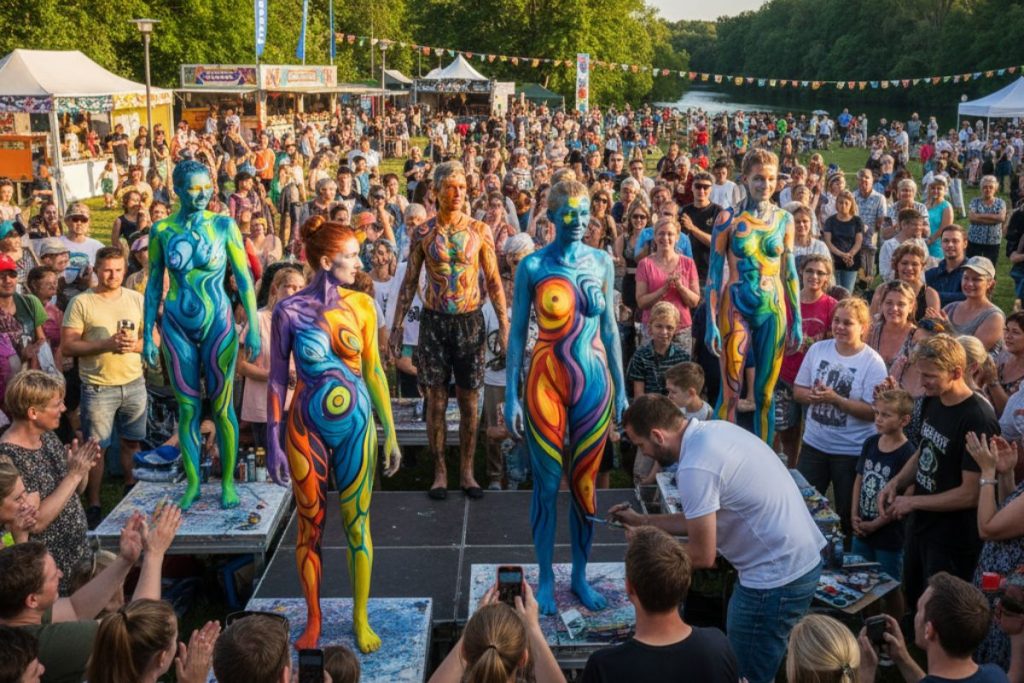
The contest paradox
These competitions illustrate a fascinating paradox. On the one hand, they can be seen as a celebration of bodily diversity, a resistance to the dominant canons of beauty. It’s the triumph of the natural over the standardized. On the other hand, they can seem to reinforce the idea that a woman’s body is an object of competition, a spectacle for an audience.
This line is often blurred, and depends largely on the intentions of organizers and participants. These events beg the question: where does the line lie between celebration and exhibition? And what motivates people to take part in these shows? It’s a reflection of our times, when taboos are broken, but new forms of objectification can emerge.
The way we look at breasts is constantly evolving, and the festivals and competitions we’ve explored are living proof of this. From the canvas of the body painter to the symbol of life in breastfeeding festivals, from the instrument of humor in burlesque to the object of celebration in more singular competitions, the breast is breaking free from its purely biological or sexual function to become a genuine source of cultural and artistic expression.
These events, whether universally recognized or more marginal, testify to a desire to appropriate one’s body and celebrate it in all its diversity. The artistic approach and sociological motivations behind these events show us that beauty does not lie in pre-established standards.
But in authenticity, self-confidence and creativity. Acceptance of the body in all its forms, whether large or small, young or mature, becomes an artistic process and an act of emancipation. In the end, the breast, much more than just a part of the body, can be a work of art: unique, complex and full of meaning.


